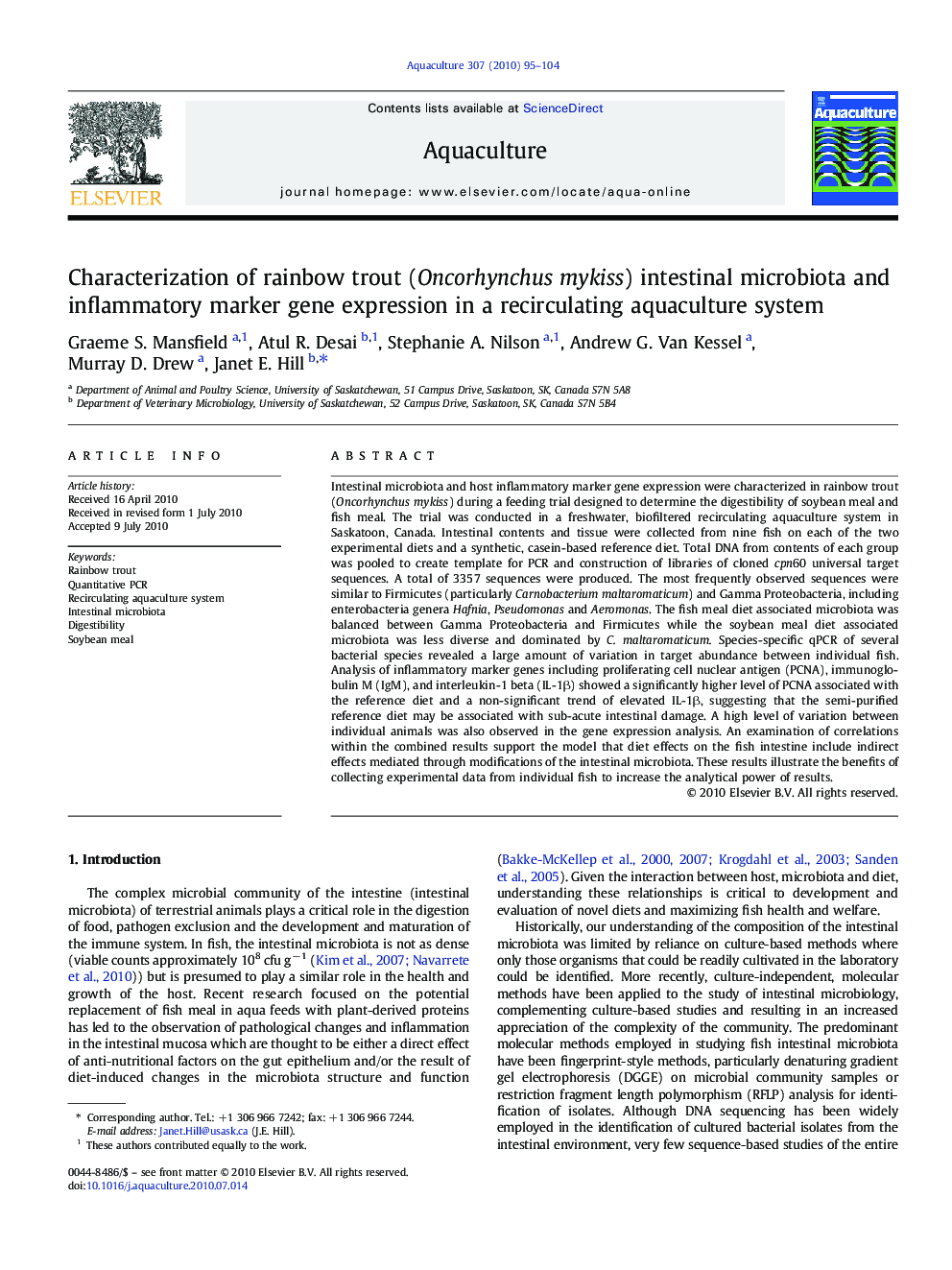| Article ID | Journal | Published Year | Pages | File Type |
|---|---|---|---|---|
| 2423562 | Aquaculture | 2010 | 10 Pages |
Intestinal microbiota and host inflammatory marker gene expression were characterized in rainbow trout (Oncorhynchus mykiss) during a feeding trial designed to determine the digestibility of soybean meal and fish meal. The trial was conducted in a freshwater, biofiltered recirculating aquaculture system in Saskatoon, Canada. Intestinal contents and tissue were collected from nine fish on each of the two experimental diets and a synthetic, casein-based reference diet. Total DNA from contents of each group was pooled to create template for PCR and construction of libraries of cloned cpn60 universal target sequences. A total of 3357 sequences were produced. The most frequently observed sequences were similar to Firmicutes (particularly Carnobacterium maltaromaticum) and Gamma Proteobacteria, including enterobacteria genera Hafnia, Pseudomonas and Aeromonas. The fish meal diet associated microbiota was balanced between Gamma Proteobacteria and Firmicutes while the soybean meal diet associated microbiota was less diverse and dominated by C. maltaromaticum. Species-specific qPCR of several bacterial species revealed a large amount of variation in target abundance between individual fish. Analysis of inflammatory marker genes including proliferating cell nuclear antigen (PCNA), immunoglobulin M (IgM), and interleukin-1 beta (IL-1β) showed a significantly higher level of PCNA associated with the reference diet and a non-significant trend of elevated IL-1β, suggesting that the semi-purified reference diet may be associated with sub-acute intestinal damage. A high level of variation between individual animals was also observed in the gene expression analysis. An examination of correlations within the combined results support the model that diet effects on the fish intestine include indirect effects mediated through modifications of the intestinal microbiota. These results illustrate the benefits of collecting experimental data from individual fish to increase the analytical power of results.
